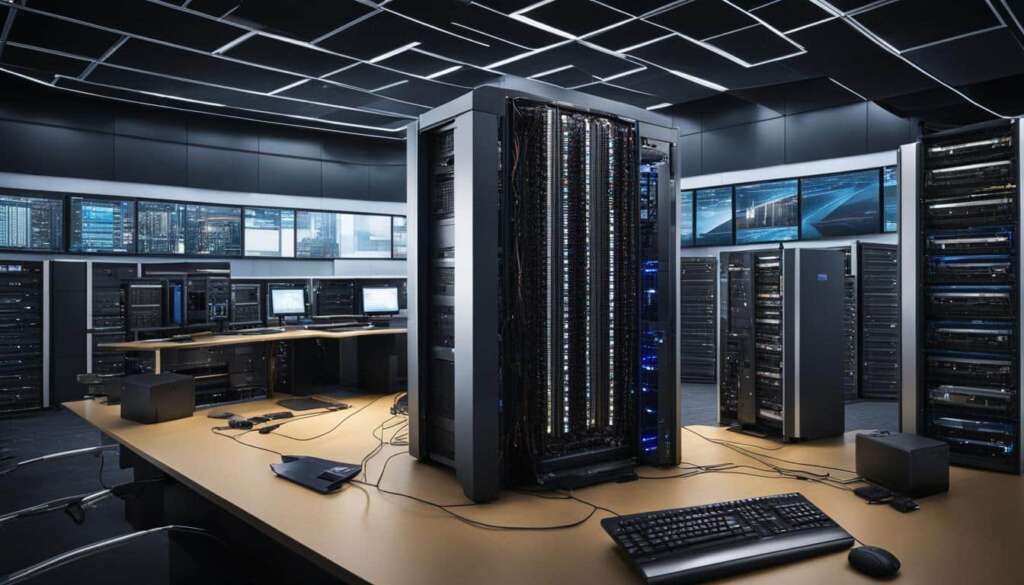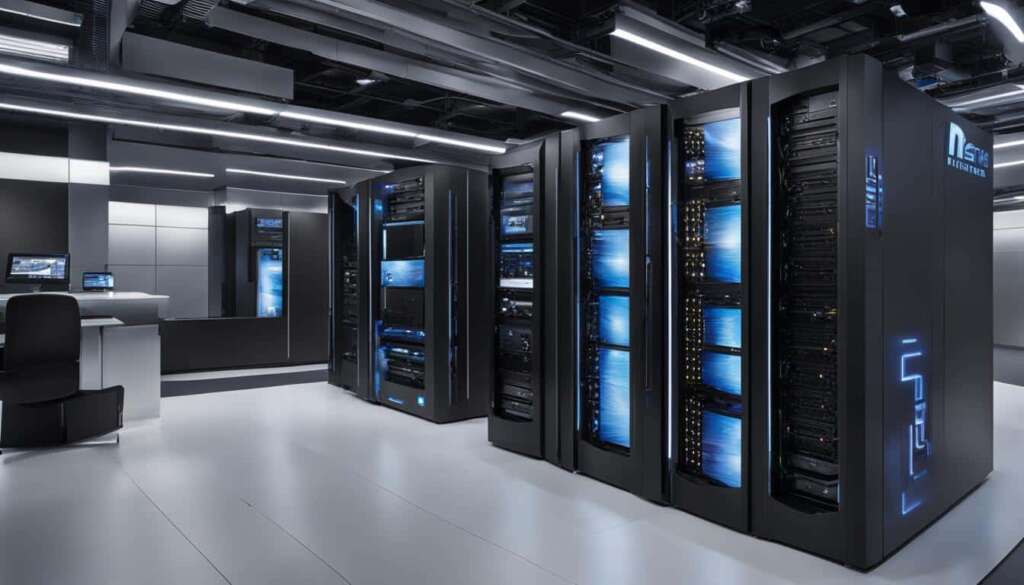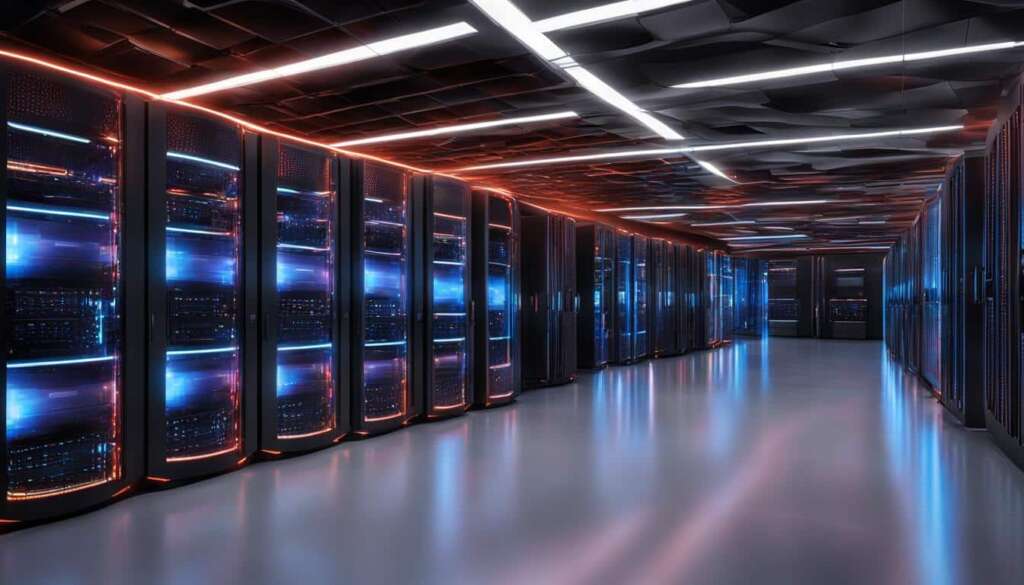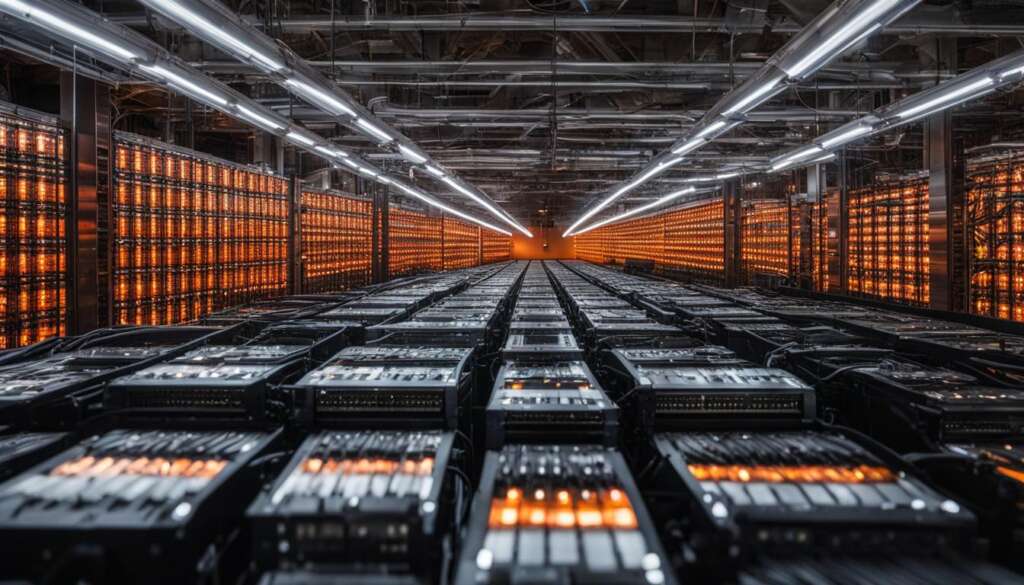Table of Contents
In today’s fast-paced digital world, businesses need robust and reliable solutions to navigate the ever-changing landscape of data processing and enterprise computing. That’s where mainframe architecture comes in.
At the core of modern business applications, mainframe systems offer high-performance computing capabilities that enable organizations to handle massive volumes of data with ease. These legacy systems have stood the test of time, providing the backbone for critical operations such as batch processing and real-time processing.
But mainframe solutions do more than just process data efficiently. They empower businesses to achieve new levels of productivity, resilience, and innovation. With the right mainframe architecture, organizations can transform their operations, unleash the full potential of their enterprise, and stay ahead of the competition.
However, ensuring the security and integrity of mainframe systems is of utmost importance. Cyber threats are on the rise, and organizations must bolster their defenses to protect sensitive data from breaches. Rocket Software, a leading provider of mainframe solutions, understands this challenge and offers robust security solutions that provide unmatched protection against cyber threats.
According to a survey conducted by Rocket Software, only 28% of organizations feel highly confident in addressing mainframe vulnerabilities. This highlights the need for businesses to reassess their security protocols and integrate robust security measures in both on-premise and cloud environments.
As Milan Shetti, of Rocket Software, emphasizes, mainframe modernization and security go hand in hand when it comes to protecting sensitive data during digital transformation initiatives. It’s crucial for businesses to have the right tools and expertise to navigate the challenges of mainframe security.
Furthermore, mainframe architecture plays a vital role in global IT workloads, as Cynthia Overby points out. It’s imperative for organizations to recognize the importance of mainframes and invest in the necessary security measures to safeguard their operations.
However, one challenge that organizations face is the shortage of qualified professionals in mainframe security roles, as highlighted by Ray Overby. Job seekers interested in mainframe security should equip themselves with the necessary skills, while employers must create attractive opportunities to attract and retain top talent.
In conclusion, mainframe solutions offer businesses a powerful toolset to empower their operations. By modernizing legacy systems, integrating with cloud environments, and strengthening security measures, organizations can unlock the full potential of their enterprise and navigate the complex world of data processing and enterprise computing with confidence.
Mainframe Modernization for Business Resilience
Mainframe modernization is essential for businesses to achieve resilience, efficiency, and innovation. By updating legacy systems and integrating them with modern technologies, organizations can unleash the full potential of their enterprise. The adaptive, intelligent enterprise empowers businesses to leverage their mission-critical core systems. Adaptigent offers solutions that enable businesses to extend large centralized data to the edge, simplify complex environments, achieve sustained adaptability, and deliver business-ready data. The integration of legacy systems with modern distributed environments enables businesses to access the full potential of their data and transactions.
Legacy systems have long been the foundation of many organizations, providing stability and reliability. However, as technology advances at a rapid pace, these systems can become a barrier to business growth and innovation. Mainframe modernization allows businesses to overcome these challenges and adapt to the ever-changing digital landscape.
By modernizing legacy systems, organizations can improve efficiency and agility, enabling them to respond quickly to market demands and customer needs. Legacy systems often have complex and outdated architectures that hinder productivity. Modernizing these systems with cloud integration and resilient infrastructure empowers businesses to streamline processes, enhance operational efficiency, and reduce costs.
In addition to efficiency, mainframe modernization drives innovation. Integrating legacy systems with modern technologies, such as artificial intelligence and machine learning, unlocks valuable insights from vast amounts of data. This enables businesses to make data-driven decisions, identify opportunities, and stay ahead of the competition.
Business resilience is another critical aspect of mainframe modernization. Legacy systems are often at risk of security breaches and disruptions. By implementing robust security measures and resilient infrastructure, organizations can minimize the risk of data breaches and downtime, ensuring continuous operations and protecting sensitive customer information.
Overall, mainframe modernization empowers businesses to harness the full potential of their enterprise, driving efficiency, innovation, and resilience. By embracing modern technologies and integrating them with legacy systems, organizations can stay competitive in today’s digital landscape.
The digital revolution is driving the need for new approaches to mainframe integration with cloud environments. Businesses are embracing cloud-based computing, big data analytics, IoT, AI, and machine learning to transform their operations and create value. However, this transformation requires careful navigation and strategic planning to ensure operational efficiency and seamless integration.
Implementing foundational system changes is crucial to achieve successful mainframe integration with cloud environments. This includes addressing key challenges such as data integration, data democratization, and data governance.
Cloud-based computing offers significant advantages, such as cost savings, scalability, and enhanced flexibility. It allows businesses to leverage computing resources on-demand, enabling them to allocate resources efficiently and adapt to changing business needs. The importance of data-driven enterprises has further accelerated the adoption of cloud-based computing, as organizations strive to harness the power of data for decision-making and innovation.
Data integration plays a vital role in the integration of mainframes with cloud environments. It involves bringing together data from disparate sources, including legacy systems, into a unified platform. This enables businesses to access a holistic view of their data, facilitating better insights and informed decision-making. By integrating mainframe data with cloud-based analytics tools, businesses can unlock the true potential of their data assets.
Data democratization, on the other hand, focuses on providing access to data and insights to stakeholders across the organization. It aims to break down silos and enable users to explore and analyze data independently, fostering a culture of data-driven decision-making. With the democratization of data, businesses can empower employees at all levels to gain valuable insights and contribute to organizational growth.
However, with greater access to data comes the need for robust data governance. Data governance ensures that data is accurate, consistent, and secure. It establishes policies, processes, and controls to govern data integrity, privacy, and compliance. By implementing effective data governance practices, businesses can maintain data quality, protect sensitive information, and ensure successful cloud analytics initiatives.
“Cloud-based computing and mainframe integration offer unprecedented opportunities for businesses to improve operational efficiency and drive innovation. However, navigating this transformation requires careful consideration of data integration, data democratization, and data governance to unlock the true potential of the cloud.”
In summary, mainframe integration with cloud environments is a critical step in leveraging the digital revolution to drive business success. By embracing cloud-based computing, businesses can achieve operational efficiency, harness the power of data, and foster innovation. Through data integration, data democratization, and effective data governance, organizations can navigate this transformation and position themselves for future growth and success.
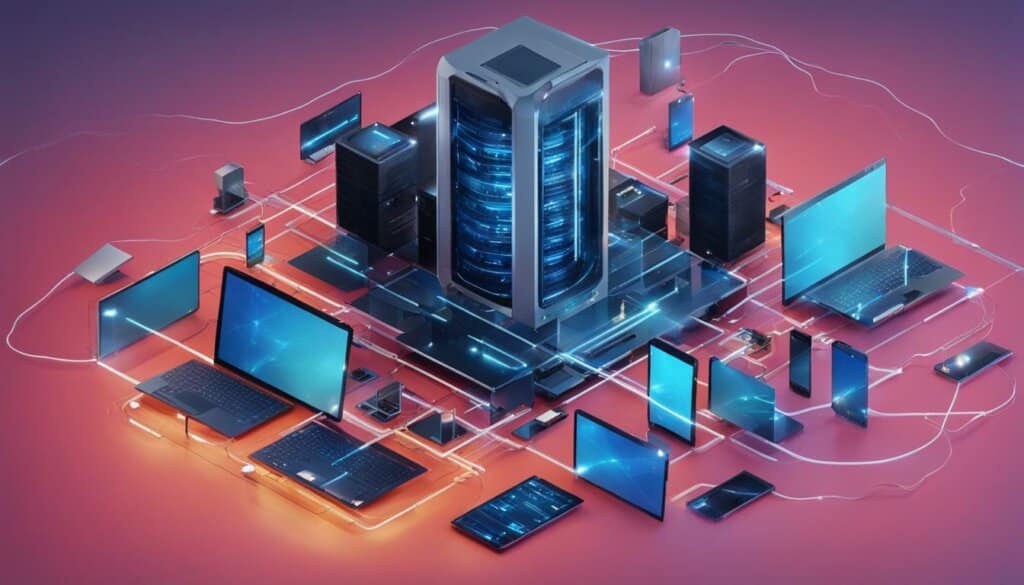
Democratizing Mainframe Data for Cloud Analytics
The shift towards democratized, cloud-based operations presents challenges and risks for IT leaders overseeing corporate data. Integrating mainframe data into cloud environments is imperative, considering the nature of the core transactional data stored in mainframe systems.
Bridging the gap between traditional mainframe operations and the cloud-native future requires an evolutionary strategy and the use of cutting-edge tools. Business users demand flexibility, easy access to trustworthy data, and quick solutions.
Data integrity and data governance are crucial for successful cloud analytics initiatives. Data democratization requires managing diverse and fragmented data, ensuring secure data exchange, and maintaining clear data lineage.
System integration decisions, such as adopting tools that support a “Design Once, Deploy Everywhere” approach, are key to the successful democratization of mainframe data.
Implementing Precisley’s Data Integration Service can simplify and streamline the integration process, ensuring data models are aligned and data sharing is efficient. By leveraging Precisley’s advanced capabilities, organizations can break down data silos and unlock the full potential of their mainframe systems in the cloud environment.
Democratizing mainframe data for cloud analytics enables businesses to harness valuable insights, make informed decisions, and stay competitive in the digital era.
Conclusion
In conclusion, mainframe solutions provide businesses with the tools and capabilities to achieve operational efficiency, resilient infrastructure, and seamless cloud integration. By embracing mainframe modernization and integrating legacy systems with cutting-edge technologies, organizations can unlock the full potential of their enterprise.
Efficient data processing is a key benefit of mainframe solutions, enabling businesses to handle large volumes of data and complex transactions effectively. This empowers organizations to make data-driven decisions quickly, improving business outcomes and driving innovation.
Additionally, the resilience offered by mainframe solutions ensures that critical business functions can continue uninterrupted even in the face of disruptions. By modernizing legacy systems and adopting robust security measures, businesses can protect sensitive data and safeguard their operations against cyber threats.
Cloud integration plays a vital role in empowering businesses to scale their operations and leverage the benefits of cloud-based computing. By seamlessly integrating mainframe systems with cloud environments, organizations can achieve greater agility, cost-effectiveness, and accessibility to their valuable data.
As businesses navigate the complexities of mainframe integration with cloud environments, it is crucial to address challenges such as data integration, data democratization, and data governance. By adopting an evolutionary strategy and leveraging cutting-edge tools, organizations can successfully democratize mainframe data for cloud analytics, providing actionable insights that drive business empowerment and competitive advantage.
FAQ
What is mainframe modernization?
Mainframe modernization refers to the process of updating and integrating legacy mainframe systems with modern technologies to achieve efficiency, innovation, and resilience in business operations.
How can mainframe modernization benefit my business?
Mainframe modernization allows businesses to unlock the full potential of their enterprise by enabling efficient data processing, creating a resilient infrastructure, and seamlessly integrating with cloud environments.
What challenges are involved in mainframe integration with cloud environments?
Mainframe integration with cloud environments poses challenges such as data integration, data democratization, and data governance. These challenges must be addressed to ensure successful transformation and operational efficiency.
What is the importance of data democratization in mainframe integration?
Data democratization plays a crucial role in mainframe integration as it involves managing diverse and fragmented data, ensuring secure data exchange, and maintaining clear data lineage for successful cloud analytics initiatives.
How can I democratize mainframe data for cloud analytics?
To democratize mainframe data for cloud analytics, organizations should adopt an evolutionary strategy and leverage cutting-edge tools, such as Precisley’s Data Integration Service, that support a “Design Once, Deploy Everywhere” approach.

